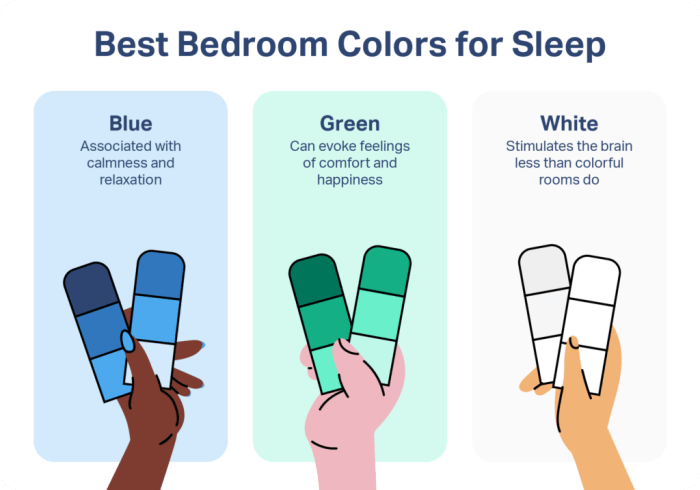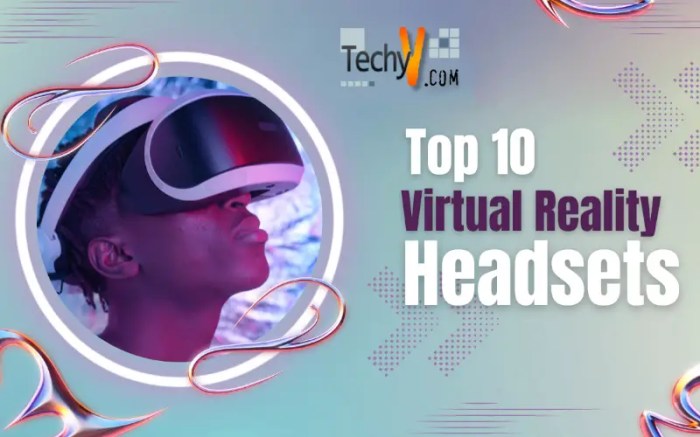7 awesome wearable techs that you never knew about! From advanced biometric monitoring to interactive fashion accessories, wearable technology is rapidly evolving, offering surprising innovations that go beyond fitness tracking. This exploration dives into seven intriguing and unexpected technologies, revealing their capabilities and potential impact on our lives.
Imagine clothing that adjusts to your needs, devices that monitor your environment, and even gadgets that interact with your brainwaves. These aren’t science fiction concepts; they are emerging realities in the world of wearable technology. Prepare to be amazed as we delve into the fascinating world of 7 awesome wearable techs that you never knew about.
Seven Hidden Gems in Wearable Tech
The world of wearable technology is exploding, with new devices emerging faster than we can keep up. From fitness trackers to smartwatches, we’ve become accustomed to the constant stream of information at our fingertips. But beneath the surface of the familiar lies a fascinating landscape of innovative wearables, poised to reshape how we interact with the world. These aren’t just incremental improvements; they’re radical shifts in possibilities, offering unprecedented insights into our health, environment, and even our creativity.
Overview of the Seven Wearable Technologies
This section presents seven remarkable wearable technologies, each pushing the boundaries of what’s possible. These technologies are not widely known, yet their potential applications are profound and far-reaching. They offer unique solutions to challenges across diverse sectors, from health monitoring to environmental awareness.
| Technology | Brief Description | Key Feature | Potential Application |
|---|---|---|---|
| Biometric-Integrated Clothing | Smart fabrics woven with embedded sensors to track vital signs and physical activity. | Non-intrusive data collection, comfort, and integration with daily wear. | Remote patient monitoring, fitness tracking, and personalized health coaching. |
| Neurofeedback Wearables | Headbands or other devices that measure brainwave activity and provide real-time feedback. | Improved self-awareness and regulation of brain function. | Stress management, cognitive enhancement, and therapeutic applications. |
| Environmental Monitoring Patches | Small, adhesive patches that detect and record environmental pollutants. | Continuous, real-time monitoring of environmental factors. | Air quality monitoring, pollution awareness, and early warning systems. |
| Haptic-Feedback Gloves | Gloves incorporating haptic feedback technology for enhanced tactile experiences. | Immersive and realistic tactile feedback. | Virtual reality applications, rehabilitation therapies, and interactive design tools. |
| Personalized Lighting Wearables | Smart glasses or other eyewear that adjust light intensity and color based on user needs. | Dynamic light adjustment for enhanced visual comfort. | Improved focus, reduced eye strain, and enhanced mood regulation. |
| Body Temperature Regulating Garments | Smart clothing that dynamically adjusts temperature based on body needs. | Enhanced thermal comfort and personalized temperature control. | Extreme sports, industrial work environments, and medical applications (e.g., post-surgery recovery). |
| Acoustic-Sensory Wearables | Devices that translate sounds into tactile sensations for improved sensory experiences. | Unique and engaging sensory integration. | Accessibility applications for people with hearing impairments, immersive sound experiences. |
Biometric-Integrated Clothing
Biometric-integrated clothing represents a significant advancement in health monitoring. The embedded sensors continuously track vital signs, allowing for proactive health management. Imagine a shirt that monitors your heart rate variability and alerts you to potential health issues. This technology has the potential to revolutionize remote patient monitoring, enabling individuals to proactively manage their health without the need for constant clinic visits.
Neurofeedback Wearables
Neurofeedback wearables provide insights into brainwave activity, offering a powerful tool for self-regulation and mental well-being. These devices offer real-time feedback, allowing users to understand and adjust their brainwave patterns. This has applications in stress management, cognitive enhancement, and therapeutic interventions. Practitioners are already using these tools in various settings to help people manage anxiety and focus more effectively.
Environmental Monitoring Patches
Environmental monitoring patches are crucial for understanding and responding to environmental pollution. These small, adhesive patches provide continuous data collection, allowing for real-time monitoring of air quality, chemical exposure, and other environmental factors. This data can be used to create early warning systems, identify pollution hotspots, and inform environmental policies. Data from these patches can even help individuals make informed decisions about their daily activities, such as which areas to avoid due to pollution.
Ever heard of wearable tech beyond fitness trackers? There are some seriously cool gadgets out there! From smart clothing that adjusts to your body temperature to augmented reality glasses that overlay information onto your field of vision, the possibilities are endless. Mastering these new tech skills will help you build new habits that are sustainable, just like your new habits will stick with these 5 killer skills.
These innovative wearables are poised to change the way we live, work, and interact with the world around us, promising a future that’s more connected and convenient than ever. Learning about these 7 awesome wearable techs that you never knew about is a great starting point!
Haptic-Feedback Gloves
Haptic-feedback gloves revolutionize interactive experiences by providing a realistic tactile sense. This technology offers unprecedented immersion in virtual reality, enabling users to experience complex and intricate objects with an unprecedented level of detail. Imagine grasping a virtual object and feeling its texture and weight, or even feeling the tremors of an earthquake in a virtual simulation. This technology has far-reaching applications in rehabilitation therapies, virtual training environments, and design tools.
Personalized Lighting Wearables
Personalized lighting wearables offer a dynamic approach to visual comfort. These devices adapt light intensity and color based on the user’s needs and environment. This is particularly important for people with specific visual sensitivities or those working in demanding environments. This technology promises to enhance focus, reduce eye strain, and even regulate mood, creating personalized lighting solutions for enhanced productivity and well-being.
Body Temperature Regulating Garments
Body temperature regulating garments offer significant advantages in diverse applications. These smart garments dynamically adjust temperature based on the user’s body needs, offering a customized thermal environment. This technology has implications for extreme sports, industrial work environments, and medical applications, particularly post-surgical recovery. This technology could provide a new level of comfort and safety in extreme conditions.
Acoustic-Sensory Wearables
Acoustic-sensory wearables are groundbreaking for those with sensory challenges. These devices translate sounds into tactile sensations, creating a more engaging and accessible sensory experience. Imagine feeling the vibrations of music or the echoes of a conversation in your body. This innovation is crucial for individuals with hearing impairments, opening doors to enhanced communication and participation in social activities.
This technology offers a unique approach to making the world more accessible to everyone.
Advanced Biometric Monitoring
Advanced biometric monitoring is revolutionizing personal health management by moving beyond basic activity tracking to provide deeper insights into physiological processes. This technology offers a more comprehensive understanding of an individual’s health status, enabling proactive interventions and personalized health plans. Instead of just counting steps, it measures vital signs and analyzes trends to identify potential issues early on.
Capabilities of Advanced Biometric Monitoring
Advanced biometric monitoring devices leverage a variety of sensors to collect and analyze data from multiple physiological sources. These technologies go beyond basic heart rate and steps. They use sophisticated algorithms to process and interpret the data, identifying patterns and trends that can be used to track health changes over time. The sensors can measure heart rate variability, skin temperature, blood oxygen saturation (SpO2), and even galvanic skin response, providing a holistic view of the body’s function.
Health Outcomes Improvement
This technology improves health outcomes by enabling early detection of potential health issues. For example, by continuously monitoring heart rate variability, it can detect subtle changes that may indicate stress, anxiety, or even impending cardiovascular problems. Early detection allows for timely intervention and management, potentially preventing more serious conditions from developing. Furthermore, personalized insights empower users to make informed lifestyle choices, optimizing their health and well-being.
Real-world examples include individuals who have identified and addressed early signs of sleep apnea through consistent data analysis from these devices.
Difference from Conventional Fitness Trackers
Conventional fitness trackers primarily focus on activity levels, such as steps, distance, and calories burned. Advanced biometric monitoring, however, provides a much deeper understanding of physiological responses. It analyzes not only activity but also factors like heart rate variability, sleep quality, and stress levels, offering insights that are unavailable from simpler devices. This deeper understanding empowers users to tailor their lifestyle choices for optimal health, rather than simply tracking activity levels.
This difference is crucial because it goes beyond superficial activity data to measure and interpret internal bodily responses.
Potential Impact on Personal Well-being
Advanced biometric monitoring has the potential to significantly improve personal well-being by providing actionable insights into health and wellness. By understanding how the body responds to various activities, individuals can optimize their routines to manage stress, improve sleep quality, and enhance overall performance. For instance, users can adjust their exercise routines based on real-time heart rate variability data to avoid overexertion and maximize benefits.
This technology empowers users to take a more proactive approach to their health, leading to a greater sense of control and well-being.
Comparison Table: Advanced Biometric Monitoring vs. Conventional Fitness Trackers
| Feature | Advanced Biometric Monitoring | Conventional Fitness Tracker |
|---|---|---|
| Data Collection | Multiple physiological signals (heart rate variability, skin temperature, SpO2) | Basic activity metrics (steps, distance, calories) |
| Data Analysis | Sophisticated algorithms for pattern recognition and trend identification | Basic calculations and data visualization |
| Insights Provided | Holistic view of physiological responses, potential health indicators | Limited insights into overall health status |
| Impact on Health | Early detection of potential health issues, personalized health plans | Limited impact on overall health management |
Smart Clothing Integration
Smart clothing, or activewear incorporating embedded technology, is rapidly evolving, offering a seamless blend of fashion and functionality. This innovative approach allows for personalized interaction with technology, promising enhanced performance and comfort in various activities. From athletic wear to everyday garments, the potential applications are vast and transformative.Smart fabrics are changing the way we interact with technology by embedding sensors and actuators directly into the material.
This allows for real-time monitoring and response to user needs, unlike traditional clothing that merely provides protection and aesthetics. The integration of electronics enables continuous data collection, personalized feedback, and proactive adjustments to the wearer’s environment.
Smart Fabric Sensors and Actuators
Smart clothing incorporates sensors that measure various physiological parameters like heart rate, body temperature, and even muscle activity. These sensors can be woven directly into the fabric or attached as tiny, unobtrusive patches. Actuators, on the other hand, can provide targeted stimulation or feedback to the user. For example, heating elements embedded in jackets can offer temperature regulation, while embedded vibrations can provide haptic feedback.
The combination of these elements creates a dynamic and responsive experience.
Examples of Smart Clothing
Several companies are developing smart clothing that incorporates sensors and actuators. One example is sportswear that tracks performance metrics, providing real-time feedback to the athlete. Another example is clothing that adjusts its temperature based on the wearer’s body temperature, offering comfort in various climates. Further, smart clothing can be integrated with personal health devices, such as heart rate monitors or sleep trackers, to provide comprehensive data.
Imagine shirts that monitor your sleep patterns, alerting you to potential issues and even adjusting their temperature for optimal sleep conditions.
Performance and Comfort Enhancement
Smart clothing can significantly enhance performance and comfort. For example, athletes can use smart clothing to monitor their exertion levels and adjust their training accordingly. Furthermore, the real-time feedback can prevent overexertion and optimize training. In terms of comfort, smart fabrics can adjust temperature and humidity, offering personalized comfort in various environments. The benefits extend beyond athletics, to everyday life, with smart clothing providing comfort and well-being in different situations.
Smart Clothing vs. Traditional Clothing
Traditional clothing primarily focuses on aesthetics and protection. Smart clothing, in contrast, integrates technology to provide real-time feedback and personalized experiences. The advantages of smart clothing include real-time monitoring, personalized feedback, and enhanced performance. Disadvantages might include the cost of incorporating these technologies, the need for frequent charging or battery replacements, and the potential for technical glitches or malfunction.
The development of sustainable and reliable power sources is a key area of focus.
Applications of Smart Clothing
| Application | Examples | Benefits |
|---|---|---|
| Athletic Performance | Smart sportswear, running gear | Real-time feedback on exertion levels, optimized training, injury prevention |
| Health Monitoring | Clothing with embedded heart rate sensors | Continuous monitoring of vital signs, early detection of potential health issues |
| Environmental Comfort | Temperature-regulating jackets | Personalized comfort in different climates, reduced reliance on external temperature controls |
| Security and Safety | Smart uniforms with embedded sensors for first responders | Improved situational awareness, enhanced safety protocols |
Haptic Feedback Devices
Wearable technology is rapidly evolving, and one crucial aspect driving user experience is haptic feedback. Beyond visual and auditory cues, haptic feedback provides tactile sensations, enhancing interaction and responsiveness. This technology is transforming various applications, from fitness trackers to medical devices, by making them more intuitive and engaging.Haptic feedback in wearables involves the use of actuators to create vibrations, pressure, or other tactile sensations on the skin.
This technology can provide users with a more immersive and interactive experience with their devices, as well as offer subtle cues to enhance awareness and understanding. By incorporating haptic feedback, designers can elevate the overall usability and enjoyment of wearable technologies.
Different Implementation Methods
Various methods are used to implement haptic feedback in wearable devices. The choice of method depends on the desired sensation, the location of the feedback, and the overall design goals. These include vibration motors, piezoelectric actuators, and even specialized fabrics that respond to electrical signals.
Examples of Enhanced User Experience
Haptic feedback can greatly enhance the user experience in several ways. For instance, in fitness trackers, subtle vibrations can signal the completion of a set of repetitions or provide alerts about reaching a target. In smartwatches, haptic feedback can confirm button presses or provide feedback during interactive games or applications. Furthermore, in medical wearables, haptic feedback can offer real-time feedback on biometrics, or alert users to potential health issues.
Applications Requiring Haptic Feedback
Haptic feedback is crucial in several applications, as it provides a crucial non-visual feedback mechanism. In virtual reality (VR) and augmented reality (AR) applications, haptic feedback can enhance the sense of presence and immersion by mimicking real-world interactions. For instance, a VR headset could provide haptic feedback to simulate the feeling of grabbing a virtual object. Similarly, in rehabilitation and assistive technology, haptic feedback can provide crucial feedback to users undergoing therapy or performing daily tasks.
Types of Haptic Feedback Mechanisms
| Type of Mechanism | Description | Strengths |
|---|---|---|
| Vibration Motors | Small motors that generate vibrations. | Cost-effective, widely available, and suitable for basic feedback. |
| Piezoelectric Actuators | Materials that generate a force when subjected to an electrical signal. | Offer more complex and nuanced feedback than vibration motors. |
| Electro-Active Polymers (EAPs) | Materials that change shape when an electric field is applied. | Can produce a wide range of forces and shapes, suitable for more advanced haptic experiences. |
| Specialized Fabrics | Fabric infused with actuators that produce tactile sensations when stimulated. | Can be integrated into clothing, offering a seamless and unobtrusive experience. |
Personalized Environmental Monitoring: 7 Awesome Wearable Techs That You Never Knew About
Wearable technology is no longer limited to tracking fitness metrics. A new frontier is emerging: the ability to monitor and adapt to our surroundings in real-time. These personal environmental monitors offer valuable insights into the conditions we face daily, providing crucial data for personal safety and well-being, especially in challenging or dynamic environments.Real-time environmental monitoring through wearables empowers users with proactive information, allowing for informed decisions and adjustments to optimize their experience and safety.
From detecting hazardous air quality to recognizing extreme temperatures, these devices offer a proactive approach to personal well-being in diverse settings.
Ever heard of a wearable tech that can predict your mood? Or one that monitors your sleep cycles with incredible accuracy? Turns out, the world of wearable tech is way more fascinating than you might think! These innovative gadgets are becoming increasingly sophisticated, just like great leaders who master the art of handling criticism and setbacks.
Check out 7 things great leaders handle setbacks and criticism for insights on how to overcome challenges. These advancements in wearable technology are opening up exciting new possibilities for personal well-being and productivity, just like great leadership is key to success.
Environmental Monitoring Technologies
Wearable sensors are increasingly capable of gathering a wide range of environmental data. These devices employ various technologies to measure factors like air quality, temperature, humidity, and even noise levels. This data collection is vital in providing individuals with real-time awareness of their immediate environment. The information gathered allows users to take precautions or make informed choices to stay safe and comfortable.
Environmental Monitoring Applications
These devices are not limited to specific environments. Their adaptable nature allows them to be utilized across diverse scenarios.
Outdoor Activities
For outdoor enthusiasts, these wearables provide crucial real-time feedback on environmental conditions. Monitoring temperature fluctuations, air quality changes, and even UV radiation levels empowers users to adjust their activities accordingly, mitigating potential risks and maximizing enjoyment. Hikers can track altitude changes, adjust their pace to avoid altitude sickness, and even be alerted to potential weather changes.
Workplace Safety
In industrial settings, these wearables can detect hazardous materials, monitor temperature extremes, and alert workers to potential risks. This real-time data allows for immediate action, reducing the potential for workplace accidents and injuries.
Health Monitoring in Specific Environments
For individuals with respiratory conditions, monitoring air quality is paramount. Wearables can detect levels of pollutants and allergens, providing real-time information that helps users avoid potentially harmful exposures. In environments with extreme temperatures, the devices can alert users to the risk of heat stroke or hypothermia, enabling them to take appropriate actions.
Real-time Data Provision
Wearable environmental monitors deliver real-time data through various methods, such as smartphone applications or wireless communication. The data is processed and presented in an accessible format, allowing users to understand and respond to environmental conditions rapidly. Visual displays and alerts ensure timely awareness, providing the crucial edge for informed decisions in real-time. This allows for a proactive response to changing conditions.
Examples of Environmental Monitoring and Their Uses
| Environmental Factor | Monitoring Technology | Typical Use Case |
|---|---|---|
| Air Quality (e.g., PM2.5, ozone) | Gas sensors, optical sensors | Urban air pollution monitoring, identifying pollution hotspots, proactive health management for sensitive individuals. |
| Temperature and Humidity | Thermocouples, humidity sensors | Monitoring extreme temperatures in construction sites, alerting individuals to heatstroke risk, providing comfort in extreme environments. |
| Noise Levels | Acoustic sensors | Identifying noise pollution levels in urban environments, monitoring noise exposure for workers, providing insights into noise-sensitive areas. |
| UV Radiation | UV sensors | Monitoring sun exposure levels for outdoor activities, alerting users to potential skin damage, tracking sun protection needs. |
| Altitude | Barometric pressure sensors | Tracking altitude changes during hiking or mountaineering, providing warnings for altitude sickness, optimizing activity based on altitude. |
Interactive Fashion Accessories

Beyond simple adornment, fashion is evolving to seamlessly integrate technology. Interactive fashion accessories are redefining how we experience clothing, blending style with practical functionality. They’re not just garments; they’re extensions of our digital selves, offering a unique and personalized interaction with the world around us.
Ever heard of wearable tech beyond fitness trackers? Turns out, some seriously cool gadgets can enhance various aspects of your life, like, say, becoming a better lover. Exploring the world of intimacy and connection can be deeply rewarding, and resources like become a better lover offer insights. But back to those fascinating wearable technologies – imagine smart clothing that monitors your body’s subtle signals, or devices that enhance your sleep.
Pretty cool, right?
Examples of Innovative Fashion Accessories
Interactive fashion accessories encompass a diverse range of designs, from subtle embedded sensors to more prominent displays. These accessories leverage existing technologies like LEDs, haptic feedback, and microprocessors to create engaging and personalized experiences. Smart jewelry, for instance, can vibrate to alert the wearer of incoming calls or messages, while clothing can dynamically adjust its color or texture based on environmental factors.
Features and Functionality
These accessories go beyond basic notifications. Sophisticated designs allow for personalized interactions, creating unique and stylish user experiences. Imagine a scarf that changes color depending on your mood or activity level, or a bracelet that monitors your heart rate and provides subtle feedback through vibrations. These features allow users to express themselves while simultaneously monitoring their well-being and connecting with their surroundings.
Enhancement of User Experience and Style
Interactive fashion accessories enhance the user experience in several ways. They provide a more intuitive and personalized interaction with technology, integrating it seamlessly into everyday life. These accessories also provide a unique platform for self-expression, allowing individuals to create and showcase their style through dynamic and interactive elements. The blend of fashion and technology fosters a more dynamic and engaging approach to personal style, elevating it from a static display to an active and evolving part of the user’s identity.
Interactive Fashion Accessory Types
These interactive accessories aren’t just limited to jewelry; they can take many forms.
| Accessory Type | Features | Target Audience |
|---|---|---|
| Smart Scarves | Dynamic color changes based on mood, activity, or environmental factors. Potentially embedded sensors to track biometrics or environmental conditions. | Fashion-conscious individuals seeking personalization and awareness of their body and surroundings. |
| Interactive Bracelets | Haptic feedback for notifications, health monitoring (heart rate, sleep), and customizable alerts. Potential for social interaction and group tracking. | Fitness enthusiasts, health-conscious individuals, and those seeking personalized notifications. |
| Smart Sunglasses | Integrated displays for navigation, notifications, or augmented reality overlays. Could potentially provide real-time information related to the wearer’s surroundings. | Tech-savvy individuals, travelers, or professionals who need information readily available. |
| Personalized Clothing | Adaptable materials that change texture or temperature based on user needs or environmental conditions. Could potentially incorporate sensors to track biometrics and provide feedback. | Individuals seeking comfort and personalization in their clothing, and those focused on sustainability. |
Augmented Reality (AR) Overlay Wearables

AR overlay wearables are rapidly evolving, offering a fascinating blend of physical and digital experiences. These devices layer digital information onto the user’s real-world view, enhancing perception and interaction with the environment. Imagine seeing instructions overlaid directly onto a complex task, or accessing real-time data about your surroundings without needing to consult a separate device. This technology has the potential to revolutionize how we interact with our world.AR wearables achieve this by utilizing a combination of sophisticated sensors, processing units, and display technologies.
These components work in concert to create a seamless integration of digital content with the physical world. The devices often employ cameras and motion tracking to accurately position and orient the superimposed digital information.
AR Overlay Integration in Wearables
AR overlays are integrated into wearable devices through a combination of hardware and software. Sophisticated cameras, often high-resolution and wide-angle, capture the user’s surroundings. Simultaneously, sophisticated processing units interpret the visual data, identifying objects, landmarks, or even body movements. The system then superimposes digital information onto this real-time visual stream. This overlay is projected onto a display integrated within the wearable, like a pair of smart glasses or a head-mounted display.
Enhancing Activities and Professions
AR wearables have the potential to enhance various activities and professions. In construction, workers can receive real-time instructions for complex tasks, overlaid onto the building structure. In medicine, surgeons can receive real-time anatomical data and procedural guidance. For example, a surgeon using AR glasses could have critical anatomical data projected onto the patient, improving precision during complex procedures.
Real-Time Information and Guidance
AR wearables provide real-time information and guidance through the overlayed data. Imagine a hiker using AR glasses to see topographic maps superimposed onto their view, guiding them along the optimal route or highlighting potential hazards. Real-time traffic updates and directions, overlaid onto the street view, can assist drivers in navigating congested areas more efficiently. These overlays are crucial for delivering relevant information at the precise moment it is needed.
Benefits of AR Wearables
The benefits of using AR wearables in diverse situations are numerous. Enhanced safety is a key advantage, particularly in high-risk environments. Real-time guidance can prevent accidents and reduce errors. Improved efficiency is another significant benefit, as tasks can be completed faster and with greater accuracy. AR wearables foster greater understanding and knowledge retention.
This is especially useful for training or learning new skills, as the user can view information in context.
Comparison of AR Overlay Wearable Experiences
| Category | AR Glasses (e.g., Microsoft HoloLens) | Smartwatches with AR Overlay | AR-Enhanced Clothing |
|---|---|---|---|
| Display Resolution | High, with a large field of view | Lower resolution, limited field of view | Integrated into fabric, potentially low resolution |
| Processing Power | High-end processors for complex calculations | Lower processing power, limited by device constraints | Embedded processing power in clothing, with limitations |
| User Interface | Intuitive touch interfaces or voice commands | Touch-based interface or gesture control | Potentially interactive using touch or pressure sensors embedded in the fabric |
| Applications | Architectural visualization, industrial maintenance | Fitness tracking, navigation, quick information access | Interactive fashion, augmented clothing experiences |
Brain-Computer Interface (BCI) Wearables
Brain-Computer Interfaces (BCIs) are rapidly evolving technologies that promise to revolutionize human-computer interaction. BCI wearables, in particular, are poised to connect the human brain directly to external devices, opening doors to a range of applications from restoring lost functions to enhancing cognitive abilities. This technology, still in its nascent stages, holds immense potential for improving lives in countless ways.BCI wearables utilize various methods to translate brain signals into actionable commands.
These signals, representing thoughts, intentions, and emotions, are detected and interpreted by sophisticated algorithms, enabling users to control external devices without physical interaction. This direct neural communication offers unprecedented opportunities for interaction, bypassing the limitations of traditional input methods.
Technology Behind BCI Wearables
BCI wearables employ different techniques to capture and interpret brain signals. Electroencephalography (EEG) is a common method, measuring electrical activity in the brain through electrodes placed on the scalp. Functional magnetic resonance imaging (fMRI) and magnetoencephalography (MEG) are other approaches, though these are often less portable than EEG-based solutions, making them less ideal for wearable applications. Each method has its own strengths and weaknesses, influencing the types of tasks and applications a specific BCI can support.
Capabilities of BCI Wearables, 7 awesome wearable techs that you never knew about
BCI wearables are capable of a diverse range of tasks, ranging from basic control to complex cognitive augmentation. Simple tasks include controlling cursors, selecting options, or even typing. More advanced applications include prosthetic limb control, restoring lost motor functions, and potentially enhancing cognitive performance. The ability to translate neural signals into commands opens the door to a wide range of applications, offering exciting possibilities for the future.
Applications of BCI Wearables
The potential applications of BCI wearables span multiple fields. In healthcare, BCI technology could help individuals with paralysis or other motor impairments regain control over their bodies. In gaming and entertainment, BCI could enhance user experience by allowing players to interact with games directly through their thoughts. In the workplace, BCI could enhance productivity and efficiency by allowing workers to interact with computers and devices through their thoughts.
Ethical Implications of BCI Wearables
The rapid advancement of BCI technology raises important ethical considerations. Issues of privacy, data security, and potential misuse of the technology need careful consideration. The ability to access and interpret neural data raises concerns about the potential for manipulation and discrimination. Furthermore, questions regarding the definition of “consent” in the context of BCI use need to be addressed.
Components of a BCI Wearable System
| Component | Functionality |
|---|---|
| Signal Acquisition Device | Captures neural signals from the brain using methods like EEG, MEG, or fMRI. This component often involves sensors, electrodes, and signal processing units. |
| Signal Processing Unit | Processes the raw neural signals, filtering out noise and extracting meaningful information about the user’s intentions or thoughts. |
| Control Unit | Interprets the processed signals and translates them into commands or actions that can be executed by an external device. |
| Interface with External Device | Connects the BCI system to external devices, such as robotic limbs, computers, or game controllers. |
| Power Supply | Provides the necessary power to operate the BCI system, often requiring portable and efficient energy sources. |
Conclusion (General summary of all the wearables described in a short and catchy paragraph)
Wearable technology is rapidly evolving, moving beyond simple fitness trackers to encompass a sophisticated array of applications. From advanced biometric monitoring and smart clothing integration to haptic feedback, personalized environmental control, and interactive fashion accessories, these innovations are transforming how we interact with our surroundings and our own bodies. This convergence of technology and fashion promises a future where wearable devices seamlessly integrate into our lives, enhancing our well-being and productivity in ways we’re only beginning to imagine.
The future likely holds even more innovative applications, leveraging augmented reality overlays, brain-computer interfaces, and other emerging technologies.
Summary of the 7 Technologies
The seven wearable technologies explored – advanced biometric monitoring, smart clothing integration, haptic feedback devices, personalized environmental monitoring, interactive fashion accessories, augmented reality (AR) overlay wearables, and brain-computer interface (BCI) wearables – each offer unique functionalities and potential benefits. These technologies aim to improve various aspects of human life, from health monitoring and personalized comfort to enhanced communication and productivity.
Their development is driven by advancements in materials science, electronics, and software.
Potential Future Developments in Wearable Technology
Future wearable technology will likely see a greater emphasis on personalization, seamless integration with existing devices and systems, and the development of more sophisticated and intuitive user interfaces. We can expect more sophisticated and personalized health monitoring, more intelligent and adaptive clothing, and potentially even more intricate haptic feedback mechanisms. The convergence of these technologies with artificial intelligence will lead to greater automation and predictive capabilities, transforming how we interact with our environment and our bodies.
For example, wearable devices could proactively adjust environmental settings based on individual preferences and physiological data, creating a more comfortable and personalized living experience.
Advantages and Disadvantages of Wearable Technologies
| Wearable Technology | Advantages | Disadvantages |
|---|---|---|
| Advanced Biometric Monitoring | Improved health awareness, early disease detection, personalized treatment plans. | Data privacy concerns, potential for inaccurate readings, reliance on consistent usage. |
| Smart Clothing Integration | Enhanced comfort and performance, improved user experience, integration with other wearable devices. | Potential for overheating, material limitations, cost considerations. |
| Haptic Feedback Devices | Enhanced user experience in virtual reality, improved communication, and training. | Complexity in design and implementation, potential for discomfort or side effects. |
| Personalized Environmental Monitoring | Improved comfort and productivity, optimized living conditions, personalized environment control. | Cost considerations, potential for over-reliance, need for precise data collection. |
| Interactive Fashion Accessories | Enhanced aesthetic appeal, personalized fashion experiences, integration with digital environments. | Cost considerations, potential for social exclusion, need for constant updates. |
| Augmented Reality (AR) Overlay Wearables | Enhanced information access, intuitive navigation, interactive learning experiences. | Potential for distraction, dependence on external devices, cost considerations. |
| Brain-Computer Interface (BCI) Wearables | Potential for direct brain-machine communication, improved communication in disabilities, new ways to control devices. | Ethical considerations, complexity of implementation, potential for misuse. |
Final Conclusion
This journey through 7 awesome wearable techs that you never knew about has highlighted the incredible potential of this rapidly evolving field. From enhancing health and well-being to revolutionizing the way we interact with the world, wearable technology is poised to reshape our future. We’ve explored a range of applications, from personalized environmental monitoring to augmented reality overlays, and even brain-computer interfaces.
The future of wearables is truly limitless, promising innovations that will continue to surprise and delight us.











